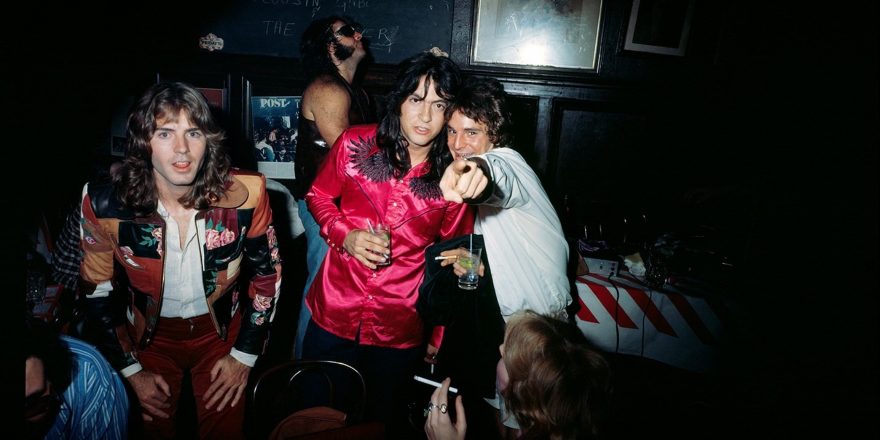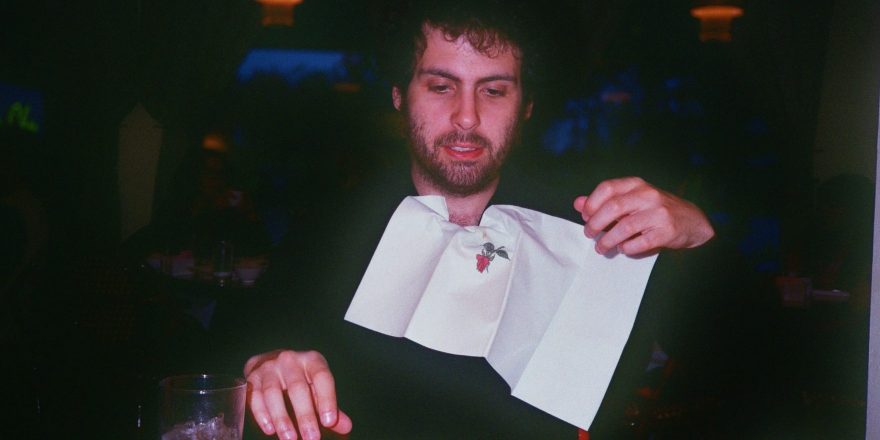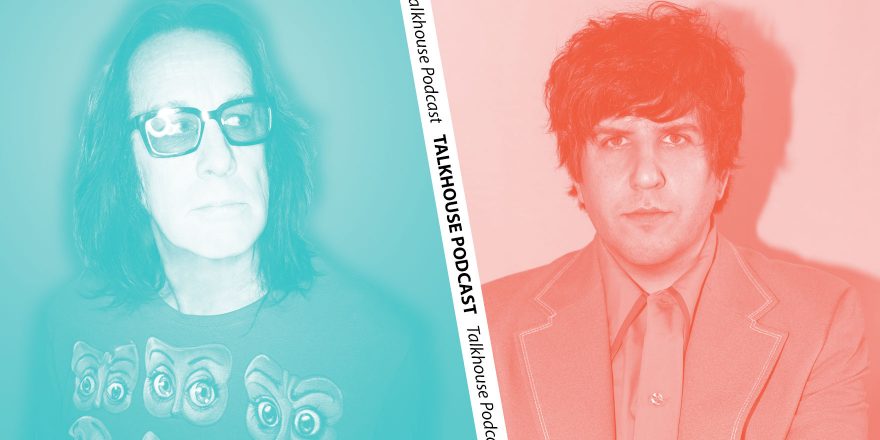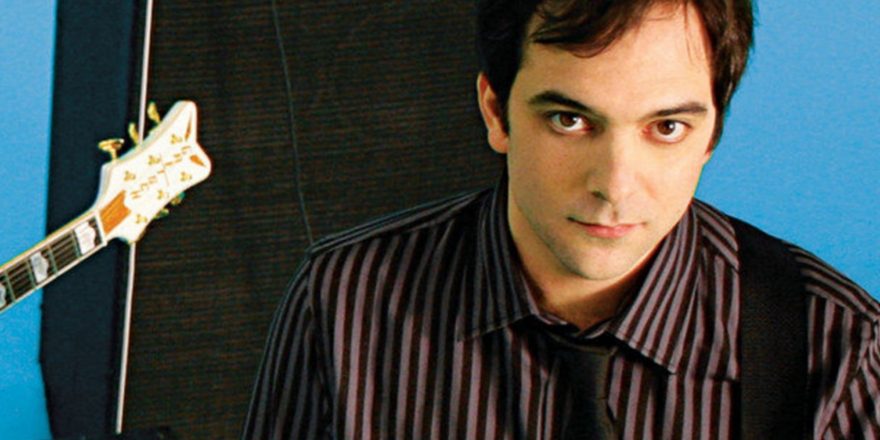“People ought to stop saying, ‘Rock is dead.’ It gets old.” -Matthew Sweet
I. What it is
What is power pop? It is a question many have asked and few have satisfyingly answered. To many, power pop is any modern idealization of mid-‘60s British pop, a sticky and sickly sweet Neapolitan of “chiming guitars,” “heavy drums” and “aching vocal harmonies.” The Raspberries, Big Star, Badfinger, Todd Rundgren — these are just a few of power pop’s pioneering practitioners.
There are entire message boards and stuffy Facebook groups dedicated to debating its origins and musical properties. Power pop fandom is as isolated as it is isolating. Most of the year it’s a pasty shut-in muttering to itself, every now and then it’s an evangelist screaming from the rooftops. To be a power pop “fan” is to be in endless pursuit of the greatest post-Beatles guitar pop single the general public has yet to hear. And once you find it: Should you share it with the world or keep it all to yourself?
To the outside world — and even to nominal double-P fans — the drama and rigorous dialectic associated with this genre is insane, and understandably so.
The gatekeeping makes a little more sense if you relate power pop to a more general aesthetic phenomenon: camp.
Susan Sontag published her essay Notes on “Camp” in 1964, the same year The Beatles conquered America. According to the Wikipedia article on camp, the phrase is “etymologically obscure” — it was once a specific cultural posture associated with working-class gay communities, but it would later be subsumed under (or, co-opted by) the postmodern umbrella. Sontag herself believed camp was fundamentally non-discriminating, although acknowledges it is by and large a sensibility created by gay men. Attempting to distinguish “camp” from other, similar aesthetics is campy.
“Camp is the consistently aesthetic experience of the world,” Sontag writes. “The whole point of camp is to dethrone the serious. Camp is playful, anti-serious. More precisely, Camp involves a new, more complex relation to ‘the serious.’ One can be serious about the frivolous, frivolous about the serious.”
Like camp art, the lines between seriousness and frivolity in power pop can be maddeningly obscure. Fountains of Wayne are often considered one of the greatest power pop bands of all time; their most celebrated record, Welcome Interstate Managers, is not power pop in the strict, sonic sense — it covers everything from Oasis and Cars pastiche to acoustic confessionals and quasi-lounge. What makes this record so great — and what makes it so campy — is the level of scholarship, commitment, and straight-faced passion the band brings to their interpretations of old hat musical tropes. Camp, according to Sontag, “reeks of self-love” even when it revels in parody.
II. Pure Camp vs. Camping
Sontag makes the distinction between deliberate camp — “camping” — and camp which is completely naive, or “pure.” Most good power pop is probably somewhere in the middle. It’s the Pee-wee’s Big Adventure of rock subgenres.
And regardless of where a specific piece of art falls on that spectrum, camp always seems at least half-conscious of the act. Power pop is, at its core, an act; it’s glorified Beatles cosplay, the playground Hard Day’s Night. The Beatles themselves are only power pop ex post facto — power pop implies a degree of self-reflexivity. When you describe a piece of music as power pop, whether it’s your own or someone else’s, you are not merely describing chiming guitars, heavy drums, and aching vocal harmonies. Journey songs feature all of those things, but no purist would ever consider them power pop. That is because “power pop” mainly communicates an aesthetic, a winking distortion or caricaturization of boomer guitar pop conventions.
Power pop is preoccupied with inside baseball notions of “commercial failure” and posthumous critical vindication. This is another campy sensibility: Power pop fans amplify their favorite bands’ failures, sometimes turning run-of-the-mill biz pratfalls into catastrophes of Shakespearian proportion: “You haven’t heard Teenage Fanclub’s Bandwagonesque? SPIN said it was better than Nevermind, and history will prove them right!”
But sometimes embellishment isn’t necessary. Badfinger were signed to The Beatles’ Apple Records and seemed poised to become their successors, but they were ripped off by management and principal songwriters Pete Ham and Tom Evans both committed suicide. XTC’s Andy Partridge gave up touring at what was arguably his creative peak due to a debilitating benzodiazepine addiction and was ripped off by management.
Power pop’s pathos (triple P) is exemplified by the story of Big Star. Their first album, 1972’s #1 Record, is power pop of the highest order — a band who clearly modeled themselves after The Beatles and paid dearly for their hubris. The rest of us won the lottery.
#1 Record is good — but the quality and precocity of its songwriting would, somewhat paradoxically, mean much less in an alternate reality where Big Star actually had hit records. “Big Star weren’t perfect,” journalist Jessica Hopper wrote in her 2013 Pitchfork review of the Big Star biography soundtrack Nothing Can Hurt Me. “[T]heirs was a losers’ history upgraded by the passage of time and the success of those they influenced […] How far Big Star fell into the wide chasm between what they wanted to be and what they were, that is what made them great.”
You could argue that romanticizing failure is part and parcel of the rock mythos, and you would be right. In typical, self-aware power pop fashion, it’s a topic that the band Jellyfish (who are sort of the Big Star of the ‘90s) wrote their best song about. Big Star are often referred to as a “cult band” and are likened to the Velvet Underground. But the Velvet Underground were nihilistic and self-immolating and their initial lack of commercial success is hardly puzzling. “Heroin” is challenging in any context, at any point in history, in any possible timeline. By contrast, a song like “September Gurls” may have “challenged” some listeners and DJs in 1974 — the record-buying public presumably wasn’t clamoring for Beatles pop then — but it is pretty, melodic, undeniably attractive in an aesthetic sense. The dramatic irony is the hook: power pop is music that would have been huge in the past, or at least, much bigger. It is inherently anachronistic; if you expect innovation then the joke is truly on you. There’s a scene in Nothing Can Hurt Me when David Bell, Big Star co-founder Chris Bell’s brother, is being interviewed about #1 Record. “It wasn’t The Beatles,” Bell says, “but it was damn good.”
“Something is good not because it is achieved, but because another kind of truth about the human situation […] is being revealed,” Sontag writes. Big Star weren’t as good as The Beatles — not even Chris Bell’s brother thought that — but that’s almost beside the point. Simply aspiring to be like the most successful and culturally significant pop band in history is ambition bordering on delusion. Big Star did the best they could with a futile premise. Their music is like the most charming three-legged table ever constructed.
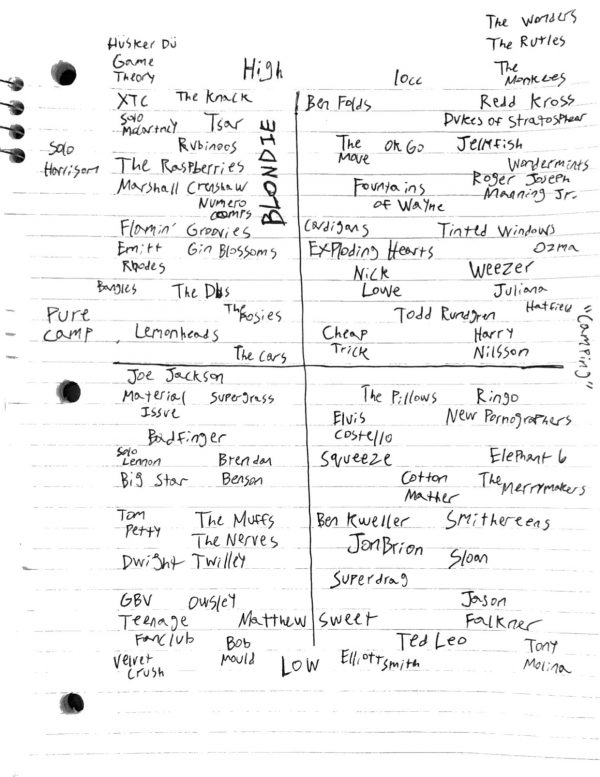
III. What it isn’t
Power pop diehards cramp up when they see a band mislabeled as “power pop.” This happens a lot these days; the power pop aesthetic isn’t exactly taking the indie world by storm, but the term is. It is frequently used to describe bona fide pop-punk bands who have more in common with Cartel than Cheap Trick.
I don’t really give a shit — at least that’s what I tell myself. I think genre definitions should be dictated by young artists and I sympathize with any critic’s desire to substitute power pop for pop-punk, a label with inescapably noxious connotations. Power pop is, after all, among the first postmodern genres, at least according to the busy folks of letters at the Guardian. Why are so many of its fans — including me, at times — so reactionary?
But then, obviously, I can empathize with the old guard’s “plight.” Before the internet fully neutralized the concept of obscurity, power pop fandom required serious emotional, not to mention literal, investment. Big Star records were something you had to seek out. I’m barely old enough to remember ordering a stack of CDs through the Kool Kat Muzik catalog with money I made from my summer job as a boom operator. Those were the days. And also, those days kind of sucked.
The point is, “power pop” was once a reliable RIYL if you were already in the club: if you like one of these bands, you will probably like all of them. Genre semantics may seem boring or démodé — or oppressive if you really want to go there — but they have a legitimate purpose for people who are always looking for new music. The debauching of once-hyper specific musical terminology makes discovery more difficult, politics be damned.
Sontag compares camp to a “private code” or a “badge of identity.” I think of power pop fandom as being like an archery board: on the outside are normal music fans who just like Big Star or whatever; inside of that, you have the diehards who probably go to conventions and are fluent in the genre and its history, but they take it really seriously, therefore becoming a product of camp themselves. The innermost ring consists of diehards who probably go to conventions and are fluent in the genre and its history almost against their will — they have a deep, unwavering, unabashed love for this style of music that was really popular with teenagers between the years of 1963 and 1966, though they also recognize that the whole thing is sort of silly.
“To name a sensibility, to draw its contours and to recount its history, requires a deep sympathy modified by revulsion,” Sontag writes. My relationship to power pop is characterized by this ouroboros of sympathy and revulsion. I admire it and detest it. I am consistently moved by it and also horribly embarrassed to have anything to do with it. To me, power pop is so much more than chiming guitars, heavy drums, and aching vocal harmonies — and simultaneously so much less.
(Photo Credit: William Eggleston)



